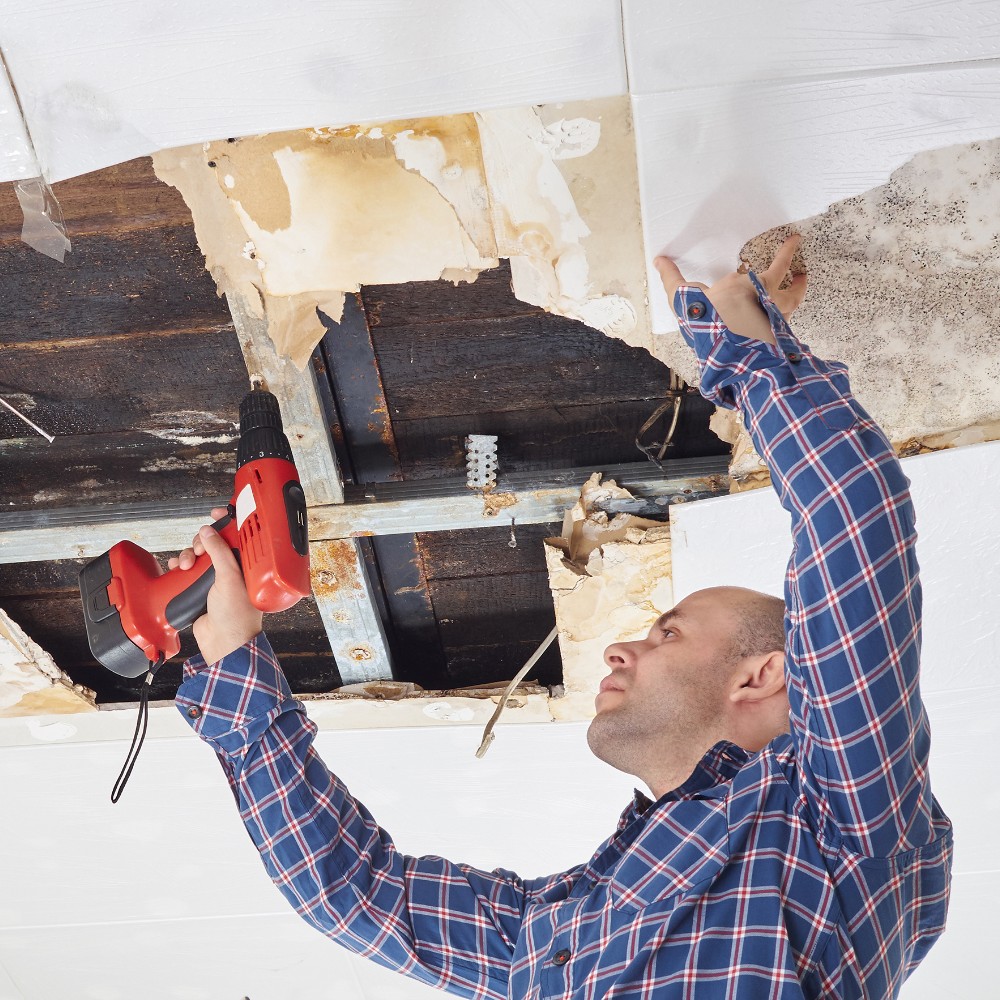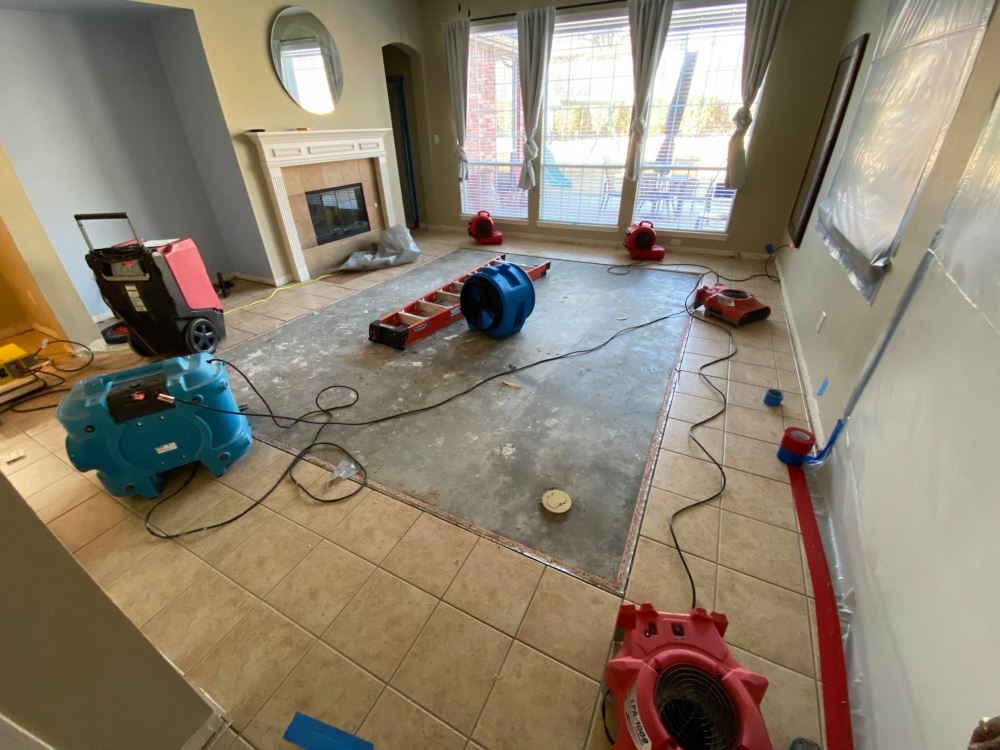How Water Damage Restoration preserves your home from mold
Wiki Article
Water Damage Restoration 101: Understanding the Process and Price
Water damage can strike unexpectedly, leaving house owners in a state of confusion. Recognizing the reconstruction procedure is essential for effective recovery. From assessing the damage to selecting the best provider, each step impacts the overall outcome and price. Factors such as the kind of water damage and necessity likewise play a substantial duty. What are the details strategies utilized in repair, and exactly how can one get ready for potential expenses?Sorts Of Water Damage
Water damage can arise from numerous resources, each providing distinct difficulties for repair. The three main sorts of water damage are categorized based upon contamination degrees: clean water, grey water, and black water. Tidy water stems from sources like broken pipelines or rainwater, positioning minimal wellness dangers. Gray water, which includes wastewater from sinks or washing machines, has impurities that may trigger pain or health problem if ingested. Black water, one of the most unsafe category, originates from sewer or floodwaters, containing unsafe germs and pathogens. Each kind demands particular remediation techniques and security actions to effectively resolve the damage and reduce health risks. Recognizing these differences is crucial for experts and home owners involved in the water damage reconstruction process.Preliminary Analysis and Inspection
An extensive preliminary evaluation and examination are vital action in the water damage restoration process. This stage starts with an expert evaluating the extent of the damage, determining the source of the water invasion, and determining the kind of water included - Water Damage Restoration. Specialists use specific equipment to measure moisture degrees in numerous products, such as wall surfaces, floors, and furniture. Additionally, they assess structural integrity and potential health and wellness risks, consisting of mold and mildew development. The searchings for from this inspection inform the remediation plan, directing necessary actions and source appropriation. Exact paperwork of the damage is vital for insurance coverage claims and future reference. Generally, this first evaluation lays the foundation for efficient restoration, making sure a detailed action to the particular scenario available

Water Removal Methods
Following the first evaluation, effective water removal techniques are used to alleviate damage and prevent more problems. These methods include using specific tools such as industrial-grade vacuum cleaners and submersible pumps. The option of approach depends upon the quantity of water existing and the type of products affected. For standing water, submersible pumps are typically used for quick removal, while vacuum cleaners are perfect for removing water from carpets and furniture. Additionally, advanced techniques like water extraction floor coverings may be employed for hard-to-reach areas. The objective is to remove as much water as possible, decreasing the possibility for mold development and architectural damage. Trigger and reliable water extraction is crucial in the general water damage reconstruction process.Drying and Dehumidification Process
When the water removal is full, the drying and dehumidification process ends up being important to bring back the afflicted area. This phase normally uses industrial-grade dehumidifiers and air moving companies to efficiently reduce moisture levels. The dehumidifiers attract wet air, getting rid of excess humidity, while air movers circulate air to increase dissipation. Monitoring equipment is typically made use of to track moisture and temperature level degrees, ensuring suitable drying conditions. The period of this process can vary depending on the degree of the water damage and ecological factors. It is vital to extensively dry all affected products, including wall surfaces, floor covering, and furnishings, to avoid mold and mildew growth and structural damage. Proper execution of this action is essential for an effective reconstruction result.Cleaning Up and Disinfecting Affected Locations

First Analysis and Inspection
Before starting any kind of remediation efforts, a detailed preliminary analysis and inspection of the influenced areas are crucial for effective cleaning and disinfecting. This process includes recognizing the extent of water damage, figuring out the resource of the water intrusion, and examining the materials influenced. Examiners normally search for signs of mold development, structural integrity issues, and harmed valuables. The analysis additionally includes inspecting wetness degrees making use of specialized devices to ensure no surprise water pockets remain, as these can result in additional difficulties. Recording the searchings for is important for preparing the next actions in the restoration procedure. A detailed initial evaluation allows repair experts to design a targeted strategy for reliable cleansing and disinfecting, inevitably minimizing damage and wellness risks.Cleansing Techniques and Products
Efficient cleansing and disinfecting of water-damaged locations require a variety of products and techniques tailored to the details products affected. For permeable surfaces like drywall and carpeting, extraction methods are important to get rid of excess dampness, complied with by deep cleaning with specialized cleaning agents. Non-porous products such as ceramic tile or metal can be cleaned making use of commercial-grade cleansers that effectively remove impurities. Heavy steam cleaning is an additional reliable method, especially for carpets and upholstery, as it makes use of heats to remove germs and mold and mildew. In addition, environment-friendly items are significantly prominent for their security and efficacy. Inevitably, choosing the appropriate cleansing approaches and products not only assures instant cleanliness yet likewise help in avoiding further damage and health dangers associated with water breach.Sanitization and Disinfection Methods
When resolving water damage, appropriate sanitization and sanitation methods are necessary to ensure the safety and security and health and wellness of the damaged setting. After preliminary cleaning, surfaces have to be treated with appropriate anti-bacterials to remove pathogens, mold, and microorganisms that thrive in damp problems. Common methods consist of making use of EPA-approved chemical disinfectants, which can be used with spraying or cleaning techniques. In addition, ultraviolet (UV) light systems can efficiently sanitize locations by neutralizing microbes without rough chemicals. The choice of technique commonly relies on the kind of products influenced and the extent of contamination. Ultimately, thorough sanitization not only recovers a secure living room however also helps avoid future wellness risks connected with remaining wetness and mold and mildew development.
Repair Services and Restoration Options

Aspects Influencing Restoration Expenses
The degree of water damage directly influences the repair costs homeowners can anticipate to sustain. Elements such as the source of the water, the period of exposure, and the affected products significantly influence pricing. Clean water damage from a damaged pipe is normally much less pricey to recover contrasted to damage caused by sewage (Flood Cleanup Services). Additionally, the level of contamination determines the requirement for specialized cleansing and disposal services, better enhancing expenditures. Geographic area also plays a duty, as regional labor prices and availability of remediation services can vary. Lastly, the urgency of the reaction impacts costs; quicker interventions usually result in reduce overall expenses by preventing further damage. Understanding these factors is essential for home owners when approximating remediation costsThe 3 main types of water damage are categorized based on contamination degrees: clean water, gray water, and black water. A comprehensive first analysis and evaluation are vital actions in the water damage repair process. For standing water, completely submersible pumps are normally utilized for quick removal, while vacuums are excellent for removing water from carpets and upholstery. The level of water damage directly affects the repair sets you back property owners can anticipate to sustain. Water Damage Restoration Clean water damage from a busted pipe is usually less pricey to bring back contrasted to damage caused by sewer.
Report this wiki page